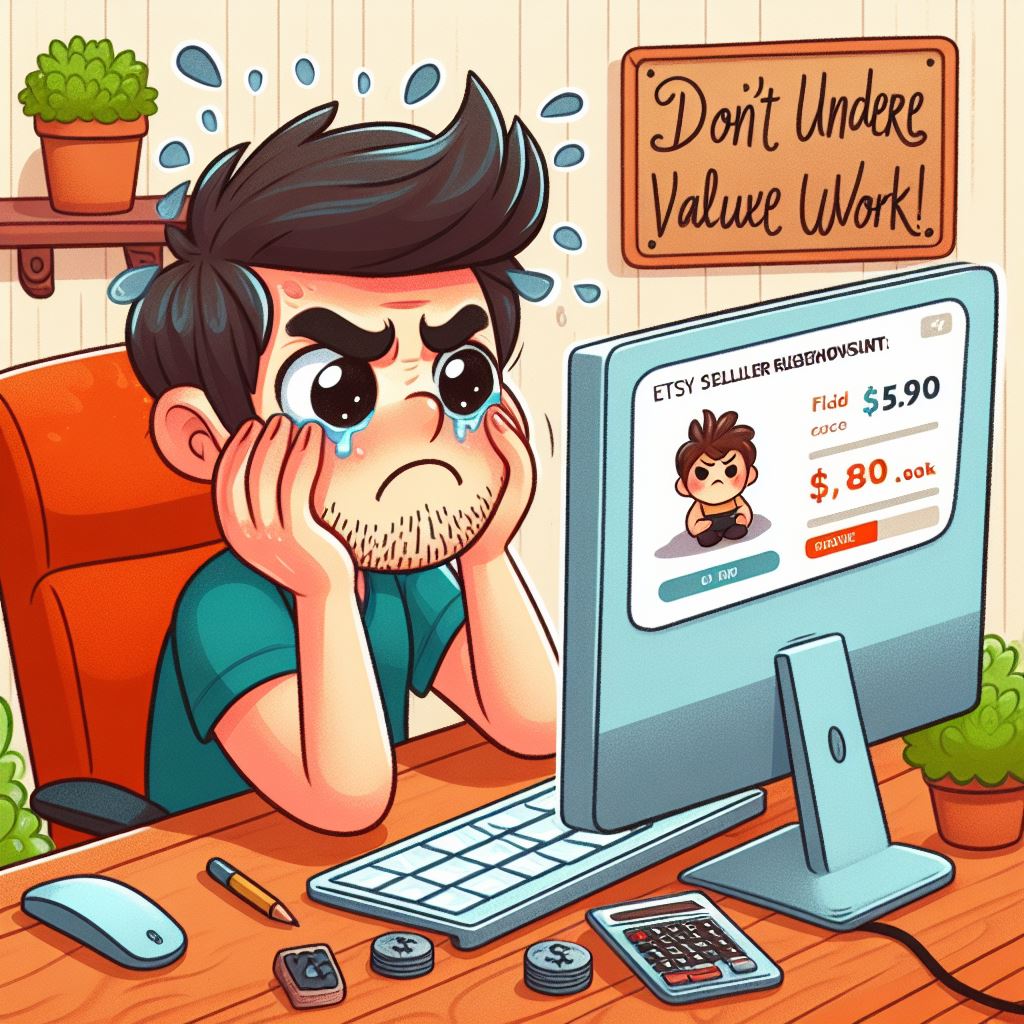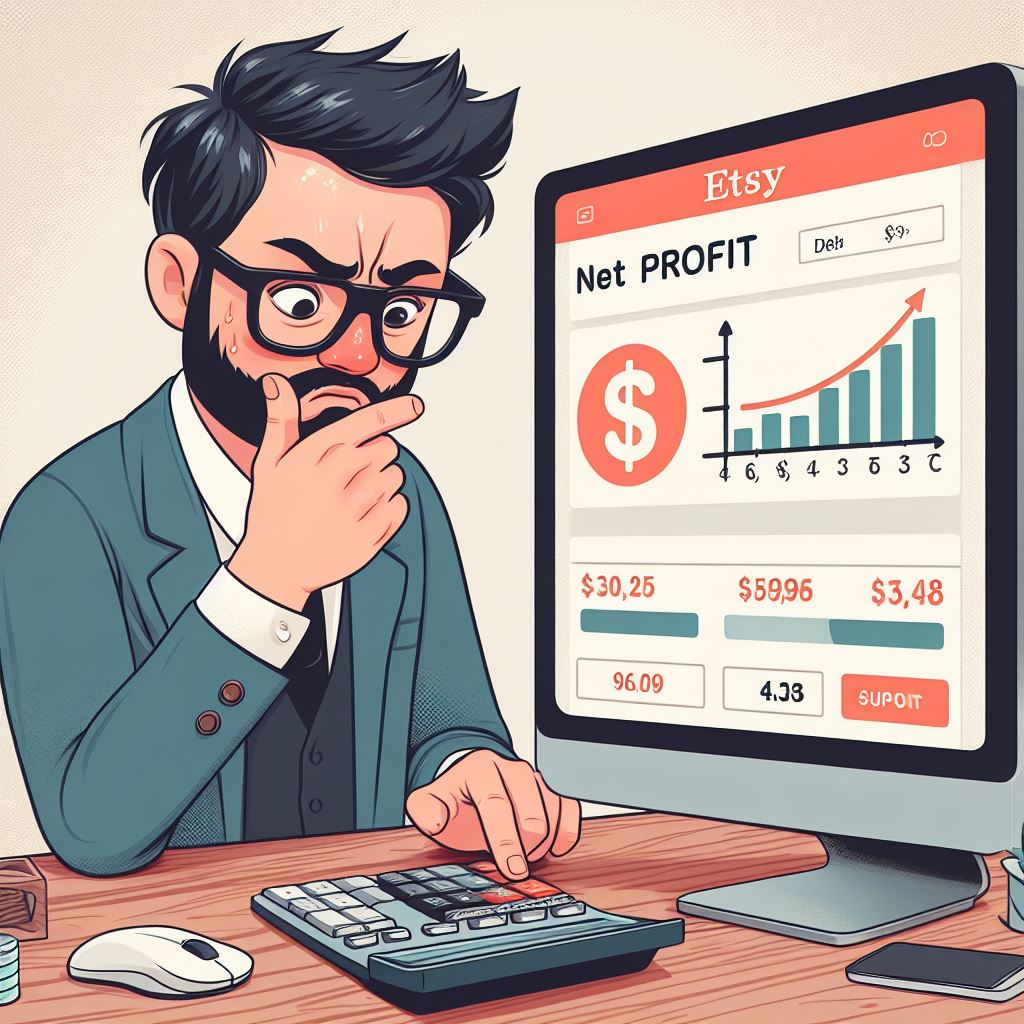Are you a budding Etsy entrepreneur, excited to share your unique creations with the world? Pricing your products effectively is the cornerstone of a successful and sustainable Etsy business. It’s a delicate balance between attracting customers and ensuring you earn a healthy profit. This comprehensive guide provides a step-by-step approach to pricing your products on Etsy, empowering you to make informed decisions and maximize your earning potential.
Table of Contents
- Understanding the Importance of Proper Pricing
- Step 1: Thorough Cost Calculation
- Step 2: Market Research & Competitor Analysis
- Step 3: Determining Your Profit Margin
- Step 4: Pricing Psychology & Value Enhancement
- Step 5: Testing, Adjusting, & Re-evaluating
- The “Net Profit” Trap on Etsy
- Conclusion
- FAQ Section
I. Understanding the Importance of Proper Pricing
Setting the right price for your Etsy products is paramount to your success. Underpricing, a common pitfall for new sellers, can lead to a cascade of negative consequences, hindering your journey toward a thriving business.
Why Underpricing Is Harmful:
- Low Profit Margins: You’re left with minimal room to cover expenses and earn a decent income, jeopardizing your business’s financial sustainability.
- Limited Sales & Promotions: With meager profits, running discounts or participating in sales events becomes challenging, limiting your ability to attract customers and boost sales.
- Perception of Low Quality: Customers often associate low prices with subpar materials or craftsmanship, potentially undermining your brand’s reputation.
- Competitor Comparison: Trying to compete on price alone with mass-produced goods is an uphill battle, putting your handmade or unique creations at a disadvantage.

II. Thorough Cost Calculation
To price your products profitably, you need a crystal-clear understanding of all your costs. Let’s break down the different types of expenses:
Direct Costs:
- Materials: Include the cost of raw materials, blanks for print-on-demand products, or any components used to create your items.
- Labor: Accurately assess your time spent designing, creating, or assembling each product. Assign an hourly rate to your labor and calculate the total labor cost per item.
- Packaging & Shipping: Factor in the costs of boxes, mailers, labels, and shipping fees. Consider potential costs for offering free shipping.
Etsy Fees:
- Listing Fees: Etsy charges a per-item fee to list your product.
- Transaction Fees: A percentage is taken from the sale price, including shipping.
- Payment Processing Fees: Etsy deducts an additional percentage for processing payments.
Overhead Costs (Indirect Costs):
- Business Expenses: Allocate a portion of your general business expenses like rent, utilities, website hosting, marketing tools, equipment maintenance, insurance, and business licenses to each product.
- Allocate to Products: Divide your total overhead costs by your estimated monthly sales to determine the per-item overhead cost. Alternatively, assign a larger percentage of overhead to higher-priced items.

III. Market Research & Competitor Analysis
Knowing your costs is just the first step. Next, dive into market research and competitor analysis to understand the landscape you’re entering.
Etsy Search Results: Use Etsy’s search function to find sellers offering similar products to yours.
Scrutinize Listings:
- Clickbait Tactics: Be aware of sellers using deceptively low prices for specific sizes or color variations to lure customers. Dig deeper to see the real pricing structure.
- Shipping Costs: Analyze listings both with and without free shipping to determine the actual cost of products. Is shipping included in the price or added later?
- Customer Reviews: Customer reviews are a goldmine of information. Gain valuable insights into customer perceptions of value and pricing.
Beyond Etsy: Expand your research beyond Etsy to explore pricing trends on other marketplaces and online platforms. This provides a broader perspective on customer expectations and market standards.
IV. Determining Your Profit Margin
With a solid understanding of your costs and competitor pricing, you’re ready to determine your desired profit margin.
- Desired Income: Set realistic income goals for your Etsy business. How much do you want to earn per month or year?
- Profit Per Item: Calculate how much profit you want to make from each sale after deducting all your direct costs, Etsy fees, and allocated overhead.
- Pricing Tiers: Consider creating different profit margins for various product categories or price ranges. You might have a higher margin for premium or more labor-intensive items.
V. Pricing Psychology & Value Enhancement
Pricing isn’t just about numbers; it’s also about psychology. Let’s explore some strategies to enhance your products’ perceived value and influence customer behavior.
- Price Anchoring: Leverage psychological price anchoring by ending your prices with a “9” or other odd numbers. This creates a perception of a better deal for customers.
- Communicating Value: Clearly and compellingly articulate the unique qualities, craftsmanship, and benefits of your products. This justifies higher prices by highlighting the value customers receive.
Value Enhancement Strategies:
- Showcase Skills & Techniques: Use high-quality images and videos to demonstrate the artistry, skill, and expertise involved in crafting your products.
- Connect with Culture & Personal Story: Share the inspiration behind your creations, your brand’s story, and any cultural or personal significance that adds a deeper layer of meaning and value.
- Premium Packaging & Presentation: Elevate the unboxing experience with thoughtful packaging, personalized touches, and attractive presentation.
- Offer Personalized Options: Provide customization or personalization options, allowing customers to create unique items that reflect their individuality and preferences.
- Bundle Products: Create sets or packages that offer a compelling value proposition for customers, encouraging larger purchases and potentially increasing your average order value.

VI. Testing, Adjusting, & Re-evaluating
Pricing is a dynamic process. Regularly evaluate your pricing strategies based on data, customer feedback, and market trends.
- Price Experimentation: Don’t be afraid to test different price points for your products and observe the results. A/B testing can provide valuable insights.
- Analyze Sales Data: Track your sales, website traffic, and conversion rates to understand how pricing impacts your overall performance.
- Customer Feedback: Pay close attention to customer reviews, direct messages, and any other channels where customers express feedback on your products and pricing.
- Regular Review & Adjustments: Re-evaluate your pricing at least quarterly, or more frequently if significant changes occur in your costs, competition, or market conditions.
VII. The “Net Profit” Trap on Etsy
Etsy’s “Net Profit” metric, while helpful for tracking basic financials, can be misleading. It doesn’t provide a complete picture of your actual profit.
- Misleading Metric: Etsy’s “Net Profit” only shows your revenue after deducting Etsy fees. It doesn’t factor in all your direct costs and overhead expenses.
- Accurate Profit Calculation: Utilize a comprehensive profit calculator that takes into account all your direct costs, Etsy fees, overhead, and your desired wage or salary.

VIII. Conclusion
Strategic pricing is fundamental to building a successful and profitable Etsy business. Remember, you are a skilled artisan or creator, offering unique and valuable products. Don’t undervalue your work – charge what your products are truly worth!
Call to Action:
- Utilize a comprehensive profit calculator to determine your true profit margins.
- Implement value enhancement strategies to justify higher prices and attract your ideal customers.
- Regularly evaluate and adjust your pricing based on data and market trends.
IX. FAQ Section
What is a good profit margin for Etsy?
While there’s no universal answer, a healthy profit margin typically starts at 30-40% after all costs are considered. This ensures you’re covering expenses, paying yourself a fair wage, and generating profit to reinvest in your business’s growth.
Should I offer free shipping on Etsy?
Offering free shipping can be advantageous, especially for items with low shipping costs. It can boost your search ranking and increase conversion rates. For items with higher shipping costs, consider factoring a portion into the product price or charging separately.
How often should I adjust my prices on Etsy?
Regularly review your costs, competitor pricing, and market trends. It’s a good practice to re-evaluate your pricing at least quarterly or whenever significant changes occur, such as rising material costs or increased shipping fees.
What are some other factors to consider when pricing my Etsy products?
Consider your target audience, your product niche, your overall branding, and your desired market positioning. Align your pricing with the perceived value you’re offering to your target customers.
How can I compete with mass-produced items on Etsy?
Focus on what makes your products unique and valuable. Highlight the quality, craftsmanship, unique designs, personalized options, and the story behind your creations. Emphasize the added value and personal touch that customers appreciate and are willing to pay for.

